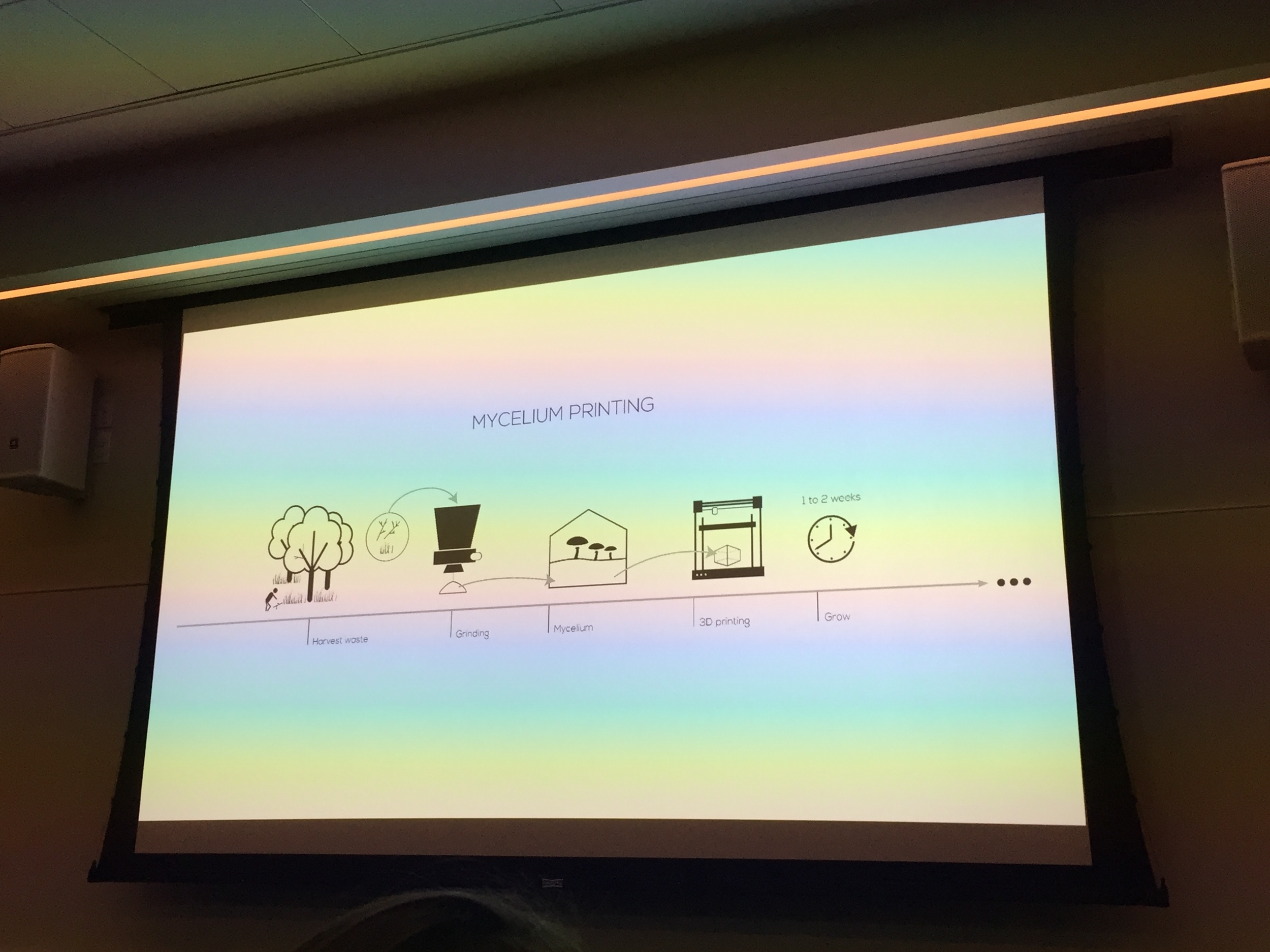NERI OXMAN, Head of the Mediated Matter Group at MIT Media Lab
NERI OXMAN, Material Ecology
David Benjamin, Bio Computation
Interviews:
- Andrew Phillips, Bio Computation Group, Microsoft
Lectures:
- Neri Oxman at the GSAPP at Columbia University
Readings & References:
- Bio Computation at Microsoft
- Programming Cells
- Programming DNA
- Programming languages for biological processes
- Amyris
- Riffyn
- Synbiota
- Juno Therapeutics
- Calico Labs
- SynBioBeta Conference
- FastCo Article: How we will grow the next generation of buildings with bacteria
- "Why Bio is the New Digital"
- Nanopore
- Darpa Living Foundaries
- BioElectronics
This week I interviewed the head of the Bio Computation Group, Andrew Philips, at the Microsoft Research Lab in Cambridge, England. In Philips’ group, bio design is not just about “incorporating living systems into design practice,” but it is about literally designing the way the cells in living systems function and behave. His work aims to program biological systems using (1) a proprietary programming language his team has developed and (2) DNA modification techniques. The software enables a bio-programmer to program DNA circuits that
allow computation to be performed at the molecular scale, while also interfacing directly with the molecular components of living systems. They form structures that are stable inside cells, and their interactions can be precisely controlled by modifying their nucleotide sequences.
Philips’ work sits at the intersection of software design, software modeling, and biological assembly. He imagines a future where, using his software, “we will be able to reprogram the way cells work [and thus] be able to reprogram the way diseases work.”
While companies like Microsoft and Riffyn are creating biological software and programming language platforms, there are many other companies in the bio-tech space looking to capitalize on this growing field by literally reengineering life. Amyris, Juno Therapeutics, and Calico are just a few that I researched after my conversation with Philips. For example, Calico, a Google acquisition, is researching the “biology that controls lifespan,” and Juno Therapeutics “genetically engineers one’s own T-Cells” as a form of cancer treatment. These companies are attempting to redesign life at the cellular level and are reimagining what it means to be human. Is the fountain of youth and a cure for cancer possible in my lifetime? Will synthetic biology become commonplace in the next decade?
This week I also attended a lecture on Material Ecology by Neri Oxman at the GSAPP of Columbia University. Oxman, like Philips, contends that in the next 10 years, because of synthetic biology, “being human will be something very different [than it is today].” Her project, Mushtari, is a Design Futures piece that plays with themes of the human microbiome, synthetic biology, and space travel. The wearable device is comprised of:
...a single strand filled with living matter inspired by the form and function of the human gastrointestinal tract [and] is designed as an organ system for consuming and digesting biomass, absorbing nutrients and expelling waste.
Her piece serves as a prototype for a future when designers think, not just about the function and aesthetics of an object, but of how the biological systems at the cellular level might be modified to augment the object itself. Mushtari is designed “to support the flow of cyanobacteria engineered to convert daylight into consumable sucrose” for a time when humans live off-planet.
In her lecture, Oxman asked the audience of architects: “To what extent will we have to hack nature to get to the larger scale of the built environment?” “Hacking nature” to redesign the built environment has been a central theme of this course, yet today there is still no concrete, implementable solution that answers the question. However, bio-designer and architect David Benjamin imagines a future when there is a very blurred line between architect and synthetic biologist. In his project, Bio Computation, a silent short-film, he argues that we will soon be “creating new sustainable flows of energy and raw material” through the implementation of synthetic biology using bio-computation and programming (like that being done today at Microsoft) with a seamless application to bio-materials in the built environment.
Neri Oxman closed her lecture by stating that we now live in a world where we, humans, will “mother nature.” In this sense, she refers to mother as a verb, meaning to give rise to or to produce. And indeed, with synthetic biology and bio computation, biology and electronics are becoming fungible (recently proclaimed by Joi Ito, head of the MIT Media Lab, at the Solid Conference), and humans are now defining and producing nature.
I ended my conversation with Andrew Philips by asking him what he thought the dangers could be with these emerging bio-technologies. As a scientist, he spoke of protocols and ethical guidelines, and while Philips is well aware of the potential harm in bio-tech, he is one of the good guys, truly trying to build a better world by tackling disease. As a designer, I do think about those individuals who may not be so good. What are the implications when humans define what nature is? What are the bio-political implications?
Speculation:
In ten years, bio computation, the ability to program DNA, will be commonplace and nearly everyone (with access to healthcare) will have genetically engineered cells in his body to combat disease. Because biotechnology is growing faster than Moore’s Law, in 20-25 years we will be engineering biology for the built environment.
Photos from Neri Oxman's Lecture:

































































